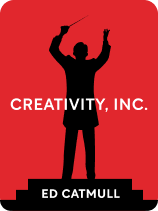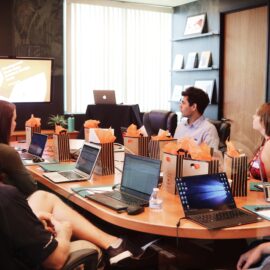

This article is an excerpt from the Shortform book guide to "Creativity, Inc." by Ed Catmull. Shortform has the world's best summaries and analyses of books you should be reading.
Like this article? Sign up for a free trial here .
What is the creative process? What does it look like at Pixar?
The creative process is a natural part of work at Pixar. In Creativity, Inc., Ed Catmull discusses workflows for creatives using Pixar as an example.
Keep reading for more about the creative process at Pixar as discussed in Creativity, Inc.
The Creative Process
At the beginning of a project, creative teams don’t know where their project is going to take them. While they may have a plan, the creative process isn’t linear and often veers off in different directions. While the venture into the unknown is necessary, it’s also terrifying.
A natural impulse may be to take control of the situation and try to dictate a specific direction to avoid failing. However, if you begin to overthink every choice that you’re making, you risk stifling the creative process and creating unoriginal work. Instead, you have to become comfortable pushing into the unknown and building a project based upon your discoveries. The more avenues that you explore, the more fleshed out your final project will be.
To help you through your creative project, visualize your process as a journey. As you form your scenario, consider the following factors:
- Know what tools you have at your disposal. You have resources and team members on your side. In your visualization, relate specific tools in your imagined scenario to the resources at your disposal. For example, if you’re visualizing your journey as driving through a long tunnel, you may relate the headlights on your car to your management team because your managers keep you focused on the road ahead.
- Recognize the external factors outside of your control. There will be external things that you will have to navigate as you go through your journey. In your visualization, relate specific factors in your imagined scenario to the uncontrollable obstacles you may encounter in real life. For example, if you’re visualizing your journey as flying a plane, you may relate turbulence to fights between departments.
- Give yourself a goal, even if your final destination isn’t known. Having a goal helps motivate you to continue moving forward. Even if your final destination isn’t definite, you need something to strive for. For example, if you’re visualizing your journey as an archeological dig, you may relate your search for bones or artifacts to finding new ideas and concepts. Even though you don’t necessarily know specifically where to dig, you know that you have to keep on digging.
Embracing the Mess During the Creative Process
The creative process isn’t clear-cut and straightforward. It requires trial and error to be successful. Because this process can be time-consuming and expensive, you may try to cut out the messier parts of your process to speed up development and ensure lower costs.
However, be careful about the amount of streamlining you do. Trying to avoid the creative “messes” by cutting time out of development and overcommitting to choices early on prevents your team from finding potential errors and developing stronger ideas. While the need to efficiently create new works can create a level of motivation for you and your team, it often leads to unfinished projects or poorly developed concepts.
Finding Balance
In a creative company, you have to balance the wants and needs of each department. Each department in your organization has a different interest. For instance, your marketing team wants to create a product that sells, your management team wants to create a product that’s easy to make, and your creative team wants to make a product that’s wholly original. There isn’t one clear-cut way to ensure balance in your organization.
However, there’s one rule-of-thumb: Don’t let one team or person get everything they want. Because departments’ “wants” often conflict with one another, they act as a counterbalance with other teams. If one team gets everything that they want, it throws the company out of balance. For example, if you’re leading a film studio, giving the creative team everything they want may lead to a bloated and over-budget film that’s too niche to sell. On the other hand, giving the marketing team everything they want may lead to an unoriginal and predictable film that appeals to the lowest common denominator.
Balance is not stagnant. It changes all of the time and requires constant attention. Even if a project achieves perfect equilibrium for a moment, the balance will likely begin to shift as team members make more decisions. Be aware of the shifting dynamics between decisions and make choices accordingly.
Letting a Project Fly
While protection is important in the early phases of a new project, the concept will eventually have to stand on its own. Once you’ve taken the time to develop and foster a project, hand it off to other people to ensure that it’s worth continuing to invest in. At that point, it will either fly or fall. If it flies, you can continue to work with the project or concept. If it falls, you’ll have to swallow your pride and let go of it for the good of your organization.

———End of Preview———
Like what you just read? Read the rest of the world's best book summary and analysis of Ed Catmull's "Creativity, Inc." at Shortform .
Here's what you'll find in our full Creativity, Inc. summary :
- How Pixar went from selling computers to successful animation studio
- What it takes to build a creative workplace culture
- Why George Lucas sold Pixar to Steve Jobs






